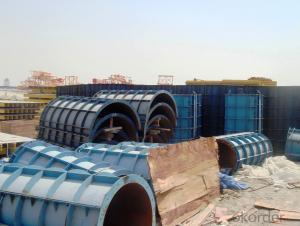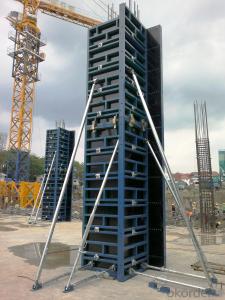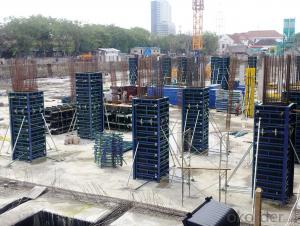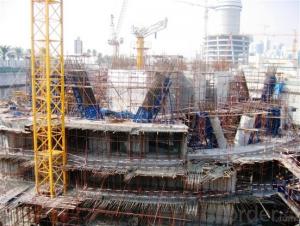Adjustable H20 Timber Beam Formwork for Slant Concrete Column Formwork
- Loading Port:
- Tianjin
- Payment Terms:
- TT or LC
- Min Order Qty:
- 50 kg
- Supply Capability:
- 1000 kg/month
OKorder Service Pledge
OKorder Financial Service
You Might Also Like
1. Structure of Steel Column Formwork
SC system is a kind of formwork for pouring circular column; it is composed of two pieces of steel formwork, props, connectors, etc.
2. Main Features of Steel Column Formwork
1. No assembling for formwork, easy operation with formed formwork.
2. High stiffness guarantees perfect concrete shape;
3. The formwork can be moving as a whole unit, fast and repeatedly turnover is available.
3. Steel Column Formwork Images
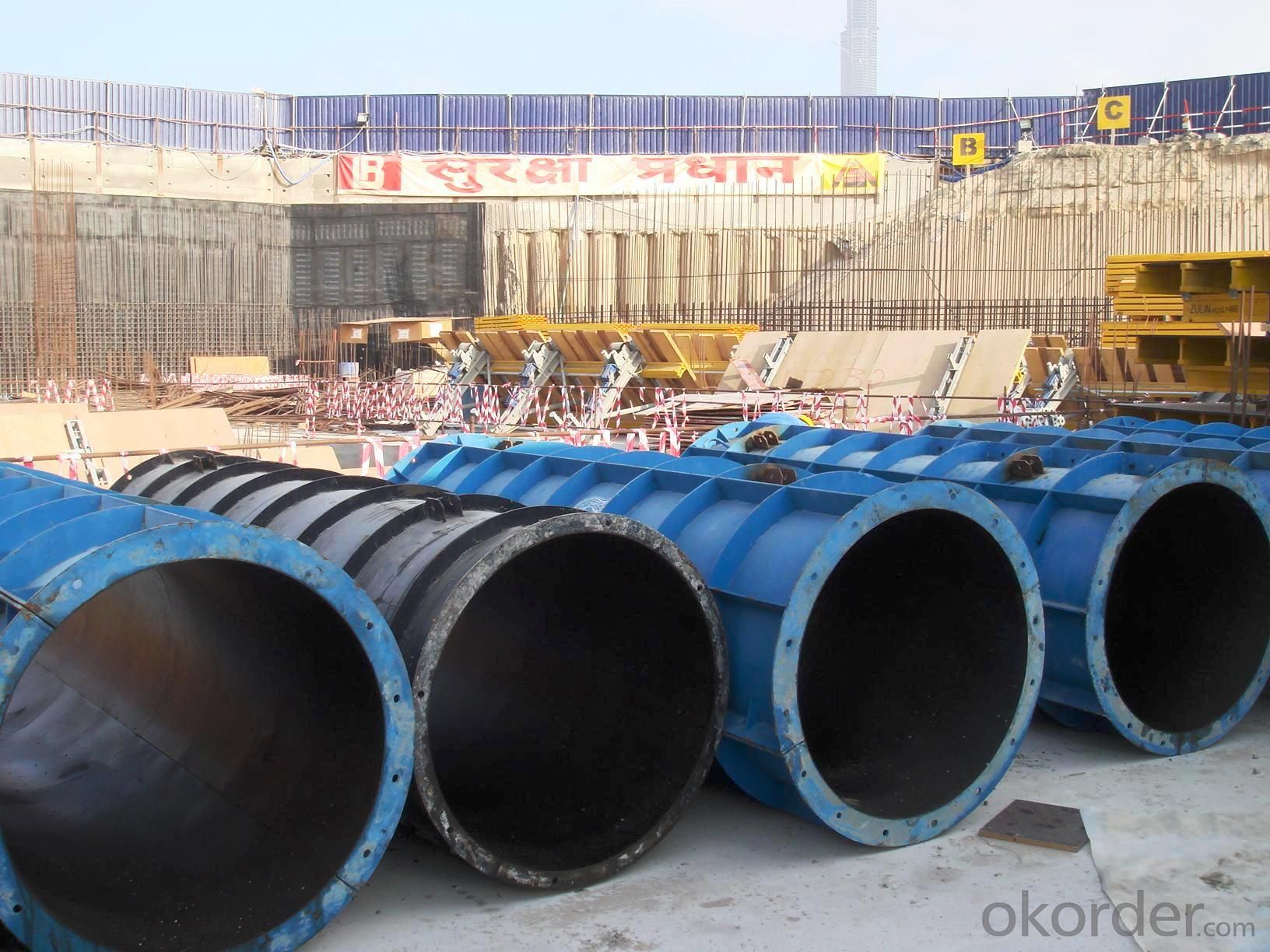
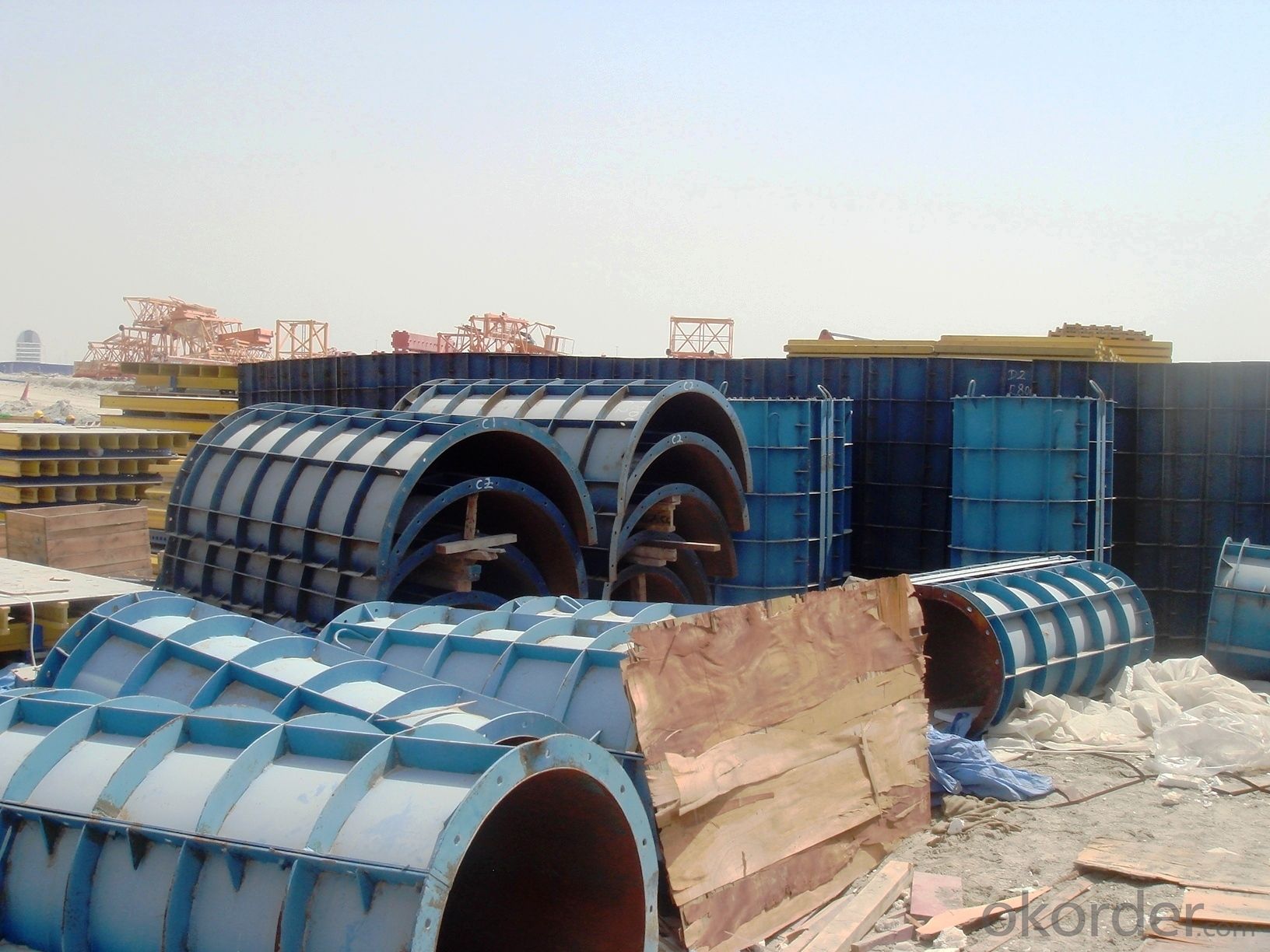
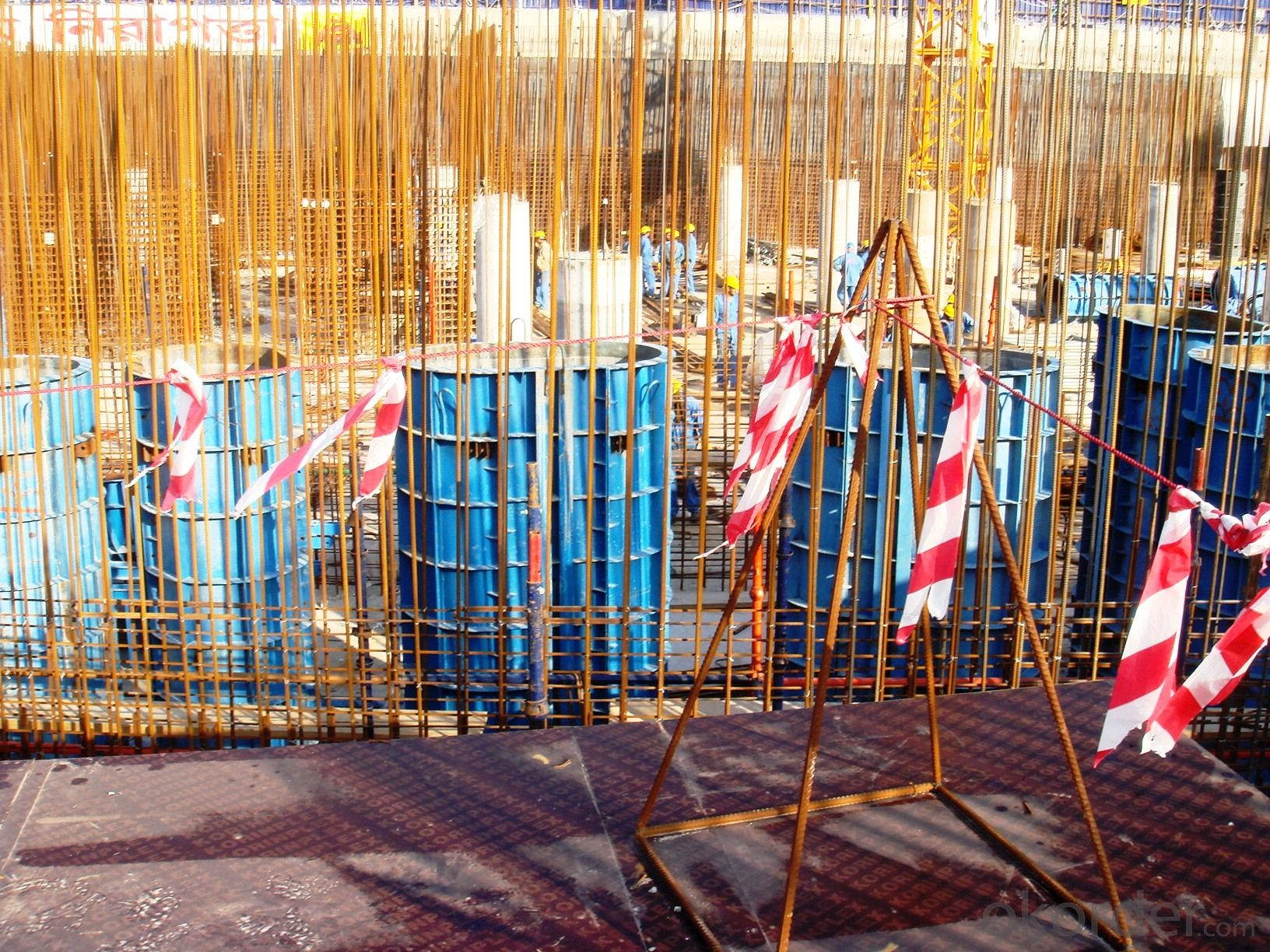
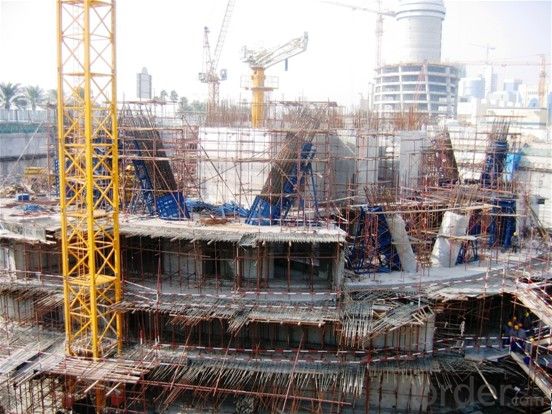
4. STEEL Column Formwork Specification
-As a standardized system, it is flexible to assemble , wood batten can be filled to satisfy the need f of non-standard size.
-The adjustable steel clamp is convenient to use, and can hold tightly.
-There is a prizing part designed in the corner, which can help to position and remove formwork easily.
-The formwork series are a complete system with a full set of accessories, and can be set up flexibly according to project demand.
5. FAQ of Steel Column Formwork
1) What can we do for you?
.We can ensure the quality of the vinyl banner and avoid extra expenses for customers.
.We can provide you the professional design team.
.We can provide fashionable and newest styles for you.
.We can design the artwork for you.
. Please feel free to customize.
2) What promises can be done by us?
. If interested in Steel Column Formwork, please feel free to write us for any QUOTE.
. If printing required, please advise asap because the whole set need much more time to complete.
. Please DO check goods when courier knocks your door and contact us asap if any issue.
3) What about of our after-sale service?
. Response will be carried out in 24hours after receiving any complain or request.
. Aluminum-Frame Formwork cost can be refund after order is confirmed.
. If the products are not based on the requirements, there will be the relevant compensations made for you.
- Q:What are the different sizes and dimensions of steel formwork?
- Steel formwork is available in various sizes and dimensions to cater to different construction requirements and project needs. The most common sizes of steel formwork panels are typically 2 meters (6.5 feet) in height and 1 meter (3.2 feet) in width. However, these dimensions can vary depending on the manufacturer and the specific project requirements. In terms of thickness, steel formwork panels are usually between 12 to 14 millimeters (0.5 to 0.6 inches) thick. This thickness ensures the panels are sturdy enough to withstand the pressure exerted by the concrete during the pouring and curing process. Additionally, steel formwork panels are available in various lengths to accommodate different wall heights and dimensions. These lengths can range from 1 meter (3.2 feet) to 4 meters (13.1 feet) or even longer, depending on the project requirements. Apart from panels, steel formwork systems also include other components such as beams, props, adjustable struts, and connectors. These components come in different sizes and dimensions to support the formwork structure and ensure stability and safety during the construction process. It is important to note that the dimensions and sizes of steel formwork can vary depending on the manufacturer, project specifications, and regional construction practices. Therefore, it is crucial to consult with the manufacturer or a structural engineer to determine the appropriate sizes and dimensions of steel formwork required for a specific construction project.
- Q:What are the different types of finishes available for steel formwork panels?
- The different types of finishes available for steel formwork panels include galvanized, painted, and powder-coated finishes. Galvanized finishes provide corrosion resistance by applying a layer of zinc on the surface of the steel. Painted finishes add color and protection to the panels, while powder-coated finishes offer a durable and aesthetically pleasing coating that is resistant to chipping, scratching, and fading.
- Q:How does steel formwork handle complex geometries?
- Steel formwork is able to handle complex geometries due to its inherent strength and flexibility. The steel panels can be easily cut and shaped to fit intricate designs, allowing for the creation of complex shapes and curves. Additionally, steel formwork can be assembled and disassembled, making it highly adaptable to different geometries and construction requirements. The rigidity and stability of steel also ensure that the formwork maintains its shape during concrete pouring, resulting in precise and accurate structures. Overall, steel formwork offers the versatility and durability needed to effectively handle complex geometries in construction projects.
- Q:What are the common safety precautions when working with steel formwork in extreme temperatures?
- When working with steel formwork in extreme temperatures, it becomes imperative to implement specific safety measures in order to safeguard the workers' well-being and successfully complete the project. Consider the following essential safety precautions: 1. Adequate Personal Protective Equipment (PPE): Workers must wear suitable PPE, including heat-resistant attire, gloves, and safety goggles, to shield themselves from extreme temperatures and potential hazards. 2. Regular hydration: It is crucial to ensure that workers stay hydrated when faced with extreme temperatures. Encourage frequent breaks for water consumption and provide access to cool drinking water on-site. 3. Provision of shaded and rest areas: Establish shaded spaces or rest zones where workers can take breaks and escape direct exposure to heat. This will help prevent heat-related illnesses such as heat exhaustion or heat stroke. 4. Training and awareness: Guarantee that all workers receive proper training and education regarding the potential risks associated with working in extreme temperatures. They should be knowledgeable about the signs of heat-related illnesses and be prepared to respond in emergency situations. 5. Monitoring weather conditions: Regularly check weather forecasts and stay informed about extreme temperature warnings or heat advisories. If possible, adjust work schedules to minimize exposure to extreme heat. 6. Implementation of a buddy system: Establish a buddy system where workers can watch out for each other. This ensures that any heat-related issues can be promptly identified and addressed. 7. Regular breaks and scheduling: Plan work schedules in a manner that allows for frequent breaks and rest periods. This helps prevent overexertion and reduces the risk of heat-related illnesses. 8. Proper ventilation: Ensure that the work area is adequately ventilated to facilitate air circulation and minimize heat accumulation. This can be achieved through the use of fans or natural ventilation methods. 9. Regular communication: Maintain open lines of communication with workers to monitor their well-being and address any concerns they may have regarding working in extreme temperatures. 10. Emergency response: Establish a well-defined emergency response plan that includes procedures for handling heat-related emergencies. This should encompass providing first aid, accessing medical assistance, and evacuating the work area if necessary. By adhering to these common safety precautions, workers can mitigate the risks associated with working in extreme temperatures while utilizing steel formwork, thereby ensuring a safe and productive work environment.
- Q:How does steel formwork accommodate openings and penetrations in the concrete?
- Steel formwork can accommodate openings and penetrations in the concrete by incorporating removable panels or cutouts in the formwork design. These panels can be easily removed or adjusted to create spaces for windows, doors, ducts, pipes, or any other required penetrations in the concrete structure. This flexibility allows for precise and efficient construction, ensuring that the concrete is poured accurately around the openings and penetrations, resulting in a well-structured and functional building.
- Q:How does steel formwork contribute to the overall fire resistance of the structure?
- Steel formwork does not directly contribute to the fire resistance of a structure. Fire resistance is primarily determined by the materials used in the construction of the building, such as the type of steel used in the structural framing, the fire-rated insulation and coating materials applied, and the overall design of the building to ensure fire safety. However, steel formwork can indirectly contribute to the fire resistance of a structure by facilitating the construction of fire-resistant elements. Steel formwork is commonly used in concrete construction to create walls, floors, and other structural elements. By providing a strong and stable framework for pouring concrete, it enables the construction of fire-resistant concrete walls and floors that can withstand high temperatures and protect the structure from the spread of fire. In addition, steel formwork can be used to create fire-rated concrete enclosures for stairwells, shafts, and other areas where fire protection is crucial. These enclosures help contain the spread of fire and provide safe escape routes for occupants during a fire emergency. Furthermore, steel formwork can be designed to incorporate fire-resistant materials such as fire-rated insulation boards or coatings. These materials can be applied to the formwork surface before pouring concrete, adding an extra layer of fire protection to the resulting structure. Overall, while steel formwork itself does not directly contribute to the fire resistance of a structure, it plays a vital role in enabling the construction of fire-resistant elements and facilitating the incorporation of fire protection materials. By ensuring the proper construction of fire-resistant concrete walls, floors, and enclosures, steel formwork indirectly contributes to the overall fire resistance and safety of the structure.
- Q:What are the common types of connections used in steel formwork systems?
- The common types of connections used in steel formwork systems include bolted connections, welded connections, and adjustable connections.
- Q:Can steel formwork be used for projects with limited formwork storage space?
- Projects with limited formwork storage space can utilize steel formwork. This type of formwork is renowned for its durability and reusability, making it a favorable option for such projects. Unlike conventional timber formwork, steel formwork can be dismantled and stored in a condensed manner, maximizing the use of limited storage space. Furthermore, steel formwork can be swiftly assembled and disassembled, minimizing the time and effort involved in formwork installation and removal. In conclusion, steel formwork is an appropriate choice for projects with restricted formwork storage capacity due to its compact storage capabilities and effortless handling.
- Q:Can steel formwork be used for both straight and curved concrete walls?
- Certainly, both straight and curved concrete walls can be constructed using steel formwork. The versatility of steel formwork lies in its ability to be effortlessly bent and adjusted, enabling the creation of curved walls in diverse sizes and shapes. By providing robust support and stability, it ensures the construction of both straight and curved walls with utmost precision and accuracy. Moreover, steel formwork's durability and reusability render it a cost-effective choice for projects necessitating both straight and curved concrete walls.
- Q:How does steel formwork affect the overall thermal performance of the building?
- Steel formwork does not directly affect the overall thermal performance of the building as it is primarily used in the construction process for shaping and supporting concrete structures. However, if steel formwork is not properly insulated or if there are gaps between the formwork and the concrete, it can contribute to thermal bridging, which can negatively impact the building's energy efficiency.
1. Manufacturer Overview |
|
|---|---|
| Location | |
| Year Established | |
| Annual Output Value | |
| Main Markets | |
| Company Certifications | |
2. Manufacturer Certificates |
|
|---|---|
| a) Certification Name | |
| Range | |
| Reference | |
| Validity Period | |
3. Manufacturer Capability |
|
|---|---|
| a)Trade Capacity | |
| Nearest Port | |
| Export Percentage | |
| No.of Employees in Trade Department | |
| Language Spoken: | |
| b)Factory Information | |
| Factory Size: | |
| No. of Production Lines | |
| Contract Manufacturing | |
| Product Price Range | |
Send your message to us
Adjustable H20 Timber Beam Formwork for Slant Concrete Column Formwork
- Loading Port:
- Tianjin
- Payment Terms:
- TT or LC
- Min Order Qty:
- 50 kg
- Supply Capability:
- 1000 kg/month
OKorder Service Pledge
OKorder Financial Service
Similar products
New products
Hot products
Related keywords

